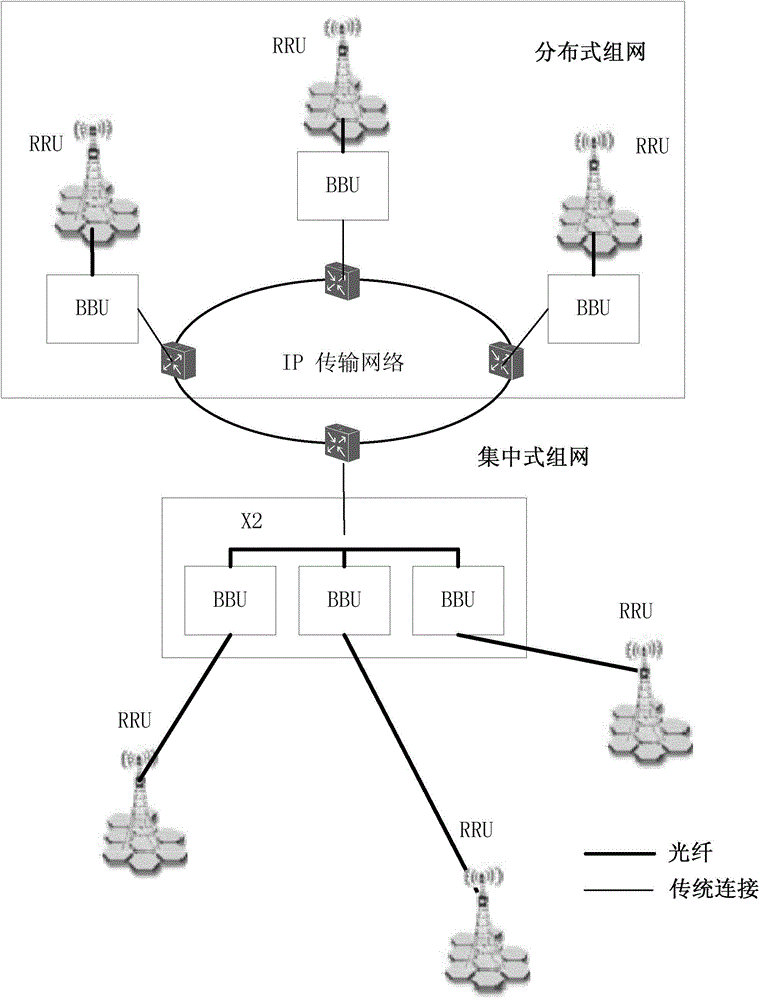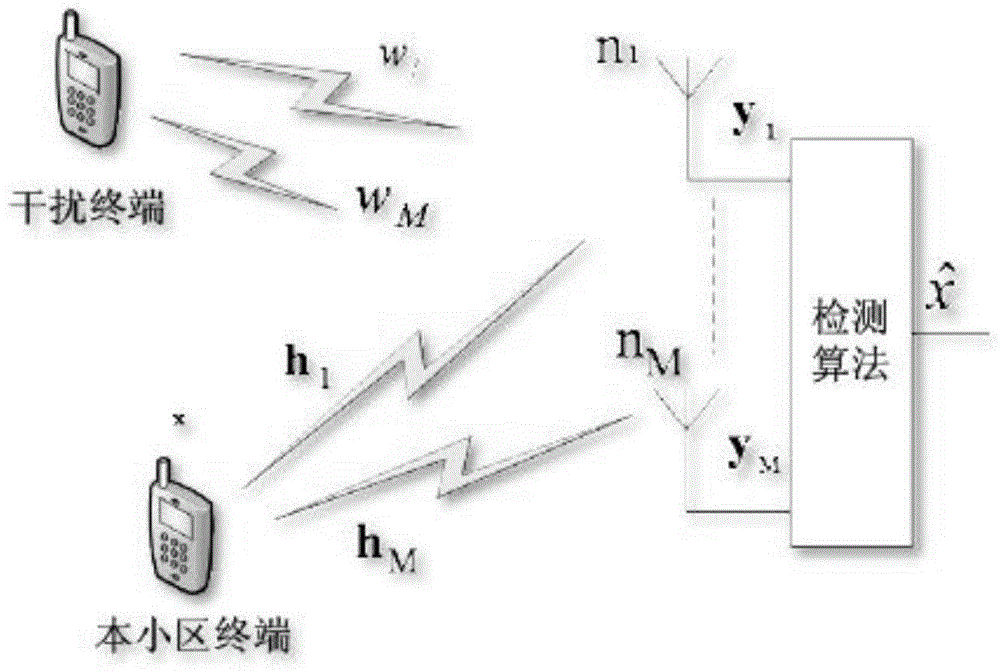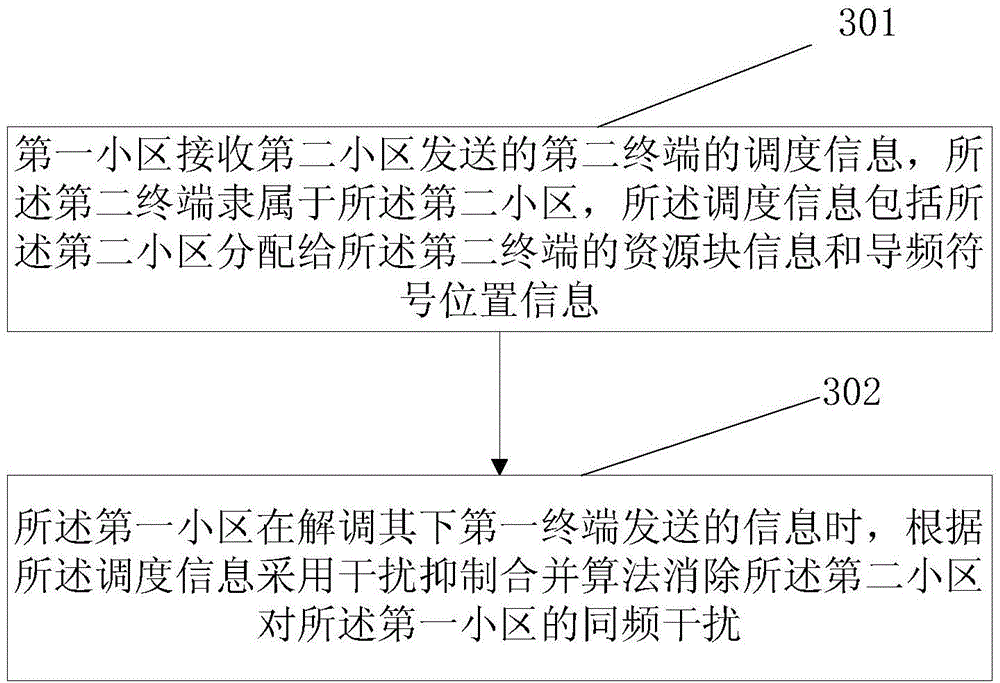Combined interference rejection method, combined interference rejection device, and method and device for implementing uplink CoMP
A technology of interference suppression and combining algorithms, applied in the field of wireless communication, can solve the problems of poor anti-interference ability of uplink CoMP, achieve good anti-interference ability, increase user gain, and improve anti-interference ability
- Summary
- Abstract
- Description
- Claims
- Application Information
AI Technical Summary
Problems solved by technology
Method used
Image
Examples
Embodiment 1
[0050] Considering that uplink CoMP cannot be realized for distributed networks at present, and the application of IRC algorithm for interference suppression cannot achieve the best effect, resulting in the current technical problems of poor anti-interference ability of uplink CoMP; image 3 As shown, this embodiment provides a joint interference suppression method for implementing uplink CoMP, including the following steps:
[0051] Step 301: The first cell receives the scheduling information of the second terminal sent by the second cell, the second terminal belongs to the second cell, and the scheduling information includes the information allocated by the second cell to the second terminal. Resource block information and pilot symbol position information.
[0052] In this embodiment, the first cell may be a serving cell or a cooperating cell in the CoMP system, and the second cell may be a cooperating cell or a serving cell in the CoMP system.
[0053] Step 302: When the ...
Embodiment 2
[0064] Such as Figure 5 As shown, this embodiment provides a method for implementing uplink CoMP, including the following steps:
[0065] Step 501: When the first cell and the second cell that need to perform uplink CoMP do not belong to the same base station, detect the transmission delay between the base station serving the first cell and the base station serving the second cell.
[0066] Step 502: Determine whether the transmission delay satisfies a preset time condition, if yes, execute step 503, if not, execute step 504.
[0067] Preferably, the preset time condition in this step may include: the transmission delay is greater than the second delay and less than or equal to the first delay, and the first delay is a preset maximum uplink CoMP delay.
[0068] Preferably, when the system also presets other JR modes, the second delay in this embodiment is the preset maximum delay for implementing uplink CoMP by using the joint soft bit combining mode.
[0069] Step 503: Imp...
Embodiment 3
[0104] Such as Figure 7 As shown, this embodiment provides a joint interference suppression device for implementing uplink CoMP, including: a receiving unit and an interference suppression unit;
[0105] The receiving unit is configured to receive scheduling information of the second terminal sent by the second cell, the second terminal belongs to the second cell, and the scheduling information includes the information allocated by the second cell to the second terminal. Resource block information and pilot symbol position information;
[0106] The interference suppression unit is used to eliminate co-channel interference from the second cell to the first cell by using an interference suppression combining algorithm according to the scheduling information when the first cell demodulates the information sent by the first terminal therein.
[0107] Using the joint interference suppression device provided in this embodiment, since the first cell (cooperative cell or serving cel...
PUM
 Login to View More
Login to View More Abstract
Description
Claims
Application Information
 Login to View More
Login to View More - R&D
- Intellectual Property
- Life Sciences
- Materials
- Tech Scout
- Unparalleled Data Quality
- Higher Quality Content
- 60% Fewer Hallucinations
Browse by: Latest US Patents, China's latest patents, Technical Efficacy Thesaurus, Application Domain, Technology Topic, Popular Technical Reports.
© 2025 PatSnap. All rights reserved.Legal|Privacy policy|Modern Slavery Act Transparency Statement|Sitemap|About US| Contact US: help@patsnap.com



